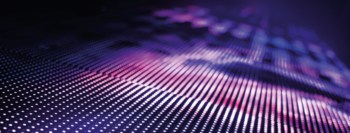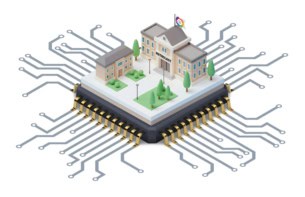
Google was the talk of the APS March Meeting on Monday, as Julian Kelly of the company’s Quantum AI Lab unveiled a 72-qubit quantum processor – the largest so far reported. The team hopes that the chip will allow them to achieve so-called quantum supremacy, the point at which a quantum computer can solve problems that are beyond the power of conventional devices.
The Google engineers are now starting to test the 72-qubit chip, which has been dubbed Bristlecone because its qubits are arranged in pinecone-like pattern. “From what we know so far, we’re very optimistic,” said John Martinis, a physicist at Google and the University of California Santa Barbara. If all goes well, Martinis is confident that quantum supremacy could be demonstrated with the next few months.
The Google announcement follows news in November that IBM Research was starting to test a 50-qubit quantum processor, while Intel revealed a 49-qubit test chip in January. But among these headline-grabbing announcements, James Wootton at the University of Basel – also speaking at the APS meeting – striked a note of caution.
Quantum games
Wootton has been creating simple games and puzzles to benchmark the performance of current prototypes, and his tests so far suggest that they still have a long way to go. “Devices now exist that are larger and cleaner than ever before,” he comments. “They’re on the cloud and they can be accessed using standard programming tools.”
Wootton’s approach stems from a long tradition of using games both to test computer hardware and to teach programming skills. And just as the hardware for quantum computing is only just starting to emerge from university labs and commercial companies, scientists also need to learn a new skill of quantum software engineering – in other words, how to use quantum processes to perform computations.
“When we start programming any sort of system we will first try something really simple,” says Wootton. “A game is a good place to start.”
To begin with Wootton created a version of the game Battleship, and used it to develop a tutorial to help scientists start programming quantum computers. He then moved on to another game, which he called Quantum Awesomeness, that tests the performance of a quantum processor with a series of increasingly difficult puzzles.
His results reveal that noise remains a major limiting factor for the current generation of prototypes, which typically have 16–19 qubits. “Based on tests with devices from IBM Research and Rigetti, even 50-qubit devices won’t be clean enough to achieve quantum supremacy,” he says. “The device size and connectivity determines the complexity of the device, while the noise levels determine how well the device can play the game.”



